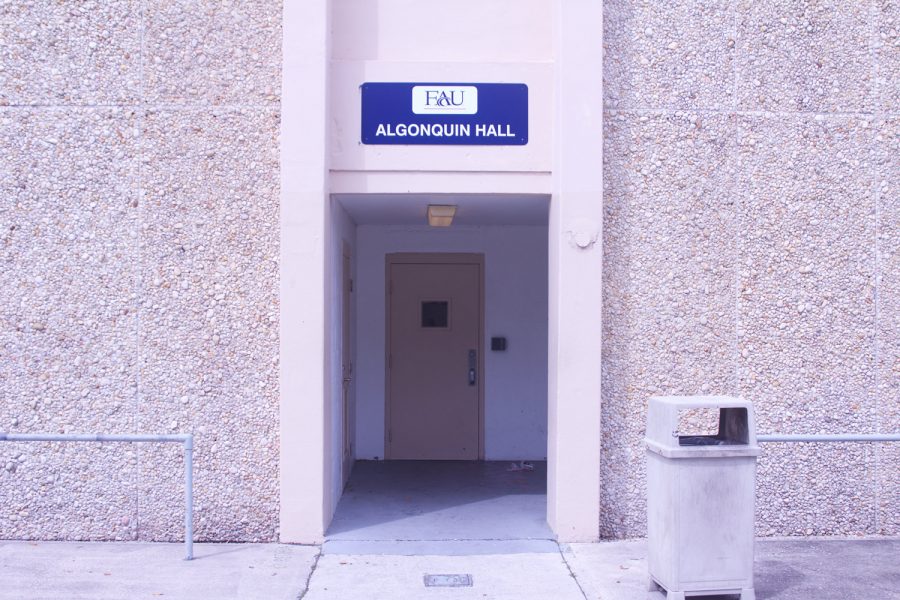
Five-year-old Susie Sennhauser didn’t know that her desire to fly would earn her a trip to the emergency room. She also didn’t imagine that it would lead her to want to become a doctor.
She fell off the roof of her house during one of her fearless endeavors, and what followed was one of many visits to the doctor.
“By the time I realized I couldn’t grow up to be a butterfly, I decided the next best thing is be a doctor,” Sennhauser said. “Ever since then, I haven’t wavered on that desire.”
Sennhauser is now one of the 64 students in the Charles E. Schmidt College of Medicine’s inaugural class. That relatively small number –– although class sizes vary across schools –– is what attracted many of the med school’s students.
“[In] a lot of places, you’re one of a [big] number –– here you’re one of 64,” Sennhauser said. “The kind of attention we receive from the faculty and the administration is just unparalleled.”
Recently, President Mary Jane Saunders announced that the College of Medicine received more than 3,000 applicants, which is twice the amount of the 1,500 who applied last year. But according to Director of Communications Gisele Galoustian, the class size is expected to remain at 64 until 2016, for a total of 256 students at full enrollment.
Sara Teichholtz, who came from Wellesley College in Boston, said the small class size –– “and the amazing weather” –– were factors when considering FAU. And though tuition is higher for an out-of-state student ($54,500 for out-of-state and $24,500 for in-state, according to Galoustian), she doesn’t regret the decision. For her, the medical education is enhanced by the bond she’s created with her class, professors and administrators.
“Our class has bonded really well,” Teichholtz said. “I’ve made great friends here. Everyone’s really close, and everyone is just so nice.”
For others, it was the allure of being a part of the inaugural class.
“For me, it’s the ability to build traditions. We’re starting things,” said another student, Saima Siddiqi. “There’s nothing to fall into; you’re making it happen.”
Siddiqi applied to several schools and even interviewed at a few of them, but her ultimate choice was between George Washington University and FAU.
“GW is 180 students per class, and when I went there I didn’t really connect to it,” she said. “People say when you go to med school, you just kind of know.” She admits, though, that FAU was more affordable (GW’s tuition costs $48,687, according to a report by U.S. News). She said she would have ended up paying four times the amount of her FAU tuition.
On a daily basis, students go through what most average first-year med students go through: they attend lectures, work in groups to solve problems, and spend much of the remaining hours of the day studying. It’s a process most in school would be familiar with, but some students said that what makes their field so challenging is the overwhelming amount of new information they must learn and absorb everyday.
Dr. Gary Rose, one of the associate professors at the school, admitted that “being a medical student anywhere is hard.” But to give it a little more perspective, Dr. Rose recalled the way one of his students described just how hard it is.
“‘Up until you get to medical school, learning is like drinking from a water fountain,’” one of his students explained to him. “‘Once you get into medical school, learning is like drinking from a fire hydrant.’”
But information overload isn’t the only part of these students’ education. To add to their responsibilities, the students practice treating actual patients, and participate in community outreach programs (like their first upcoming health fair, where they treat uninsured or under-insured people in the local community for free).
They get to learn in hands-on ways, which, according to Senior Associate Dean Dr. Stuart Markowitz, is one of the benefits of FAU’s medical program. The students’ curriculum, from day one, is heavily patient-focused. That is, the students work with their assigned physician preceptors — practicing doctors who teach and mentor them — and experience what it’s like to treat patients.
“The students from day one are working clinically,” Dr. Rose said. “They see patients, learn how to do a physical exam, create a plan of action, and they follow these patients throughout all four years.”
___________________________________________________________________________________________
How much does it cost?
Florida Atlantic University College of Medicine
In-state: $24,500
Out-of-state: $54,500
*Source: FAU Director of Communications, Gisele Galoustian
Florida State University College of Medicine
In-state: $ 23,042
Out-of-state: $68,619
*Source: FSU med school website
Florida International University College of Medicine
In-state: $61,944
Out-of-state: $93,400
*Source: FIU med school website
University of Miami Miller School of Medicine
In-state: $31,010
Out-of-state: $39,337
*Source: UM med school website
University of Central Florida College of Medicine
In-state: $25,000
Out-of-state: $53,000
*Source: UCF med school website
___________________________________________________________________________________________
Correction
The cost of tuition at FIU’s College of Medicine is $27,772.00 for in-state students and $57,772.00 for out-of-state. The UP reported otherwise.




















Fau Senior • Feb 11, 2012 at 10:17 am
FYI, in state tuition at FIU is $27,772 and out of state is $57,772. The posted numbers in this article are the complete cost of attendance.
Source:
http://medicine.fiu.edu/admissions.php?ss=finaid_cost
Don’t get me wrong, I hate FIU as much as the next Owl, just thought I’d correct the article…